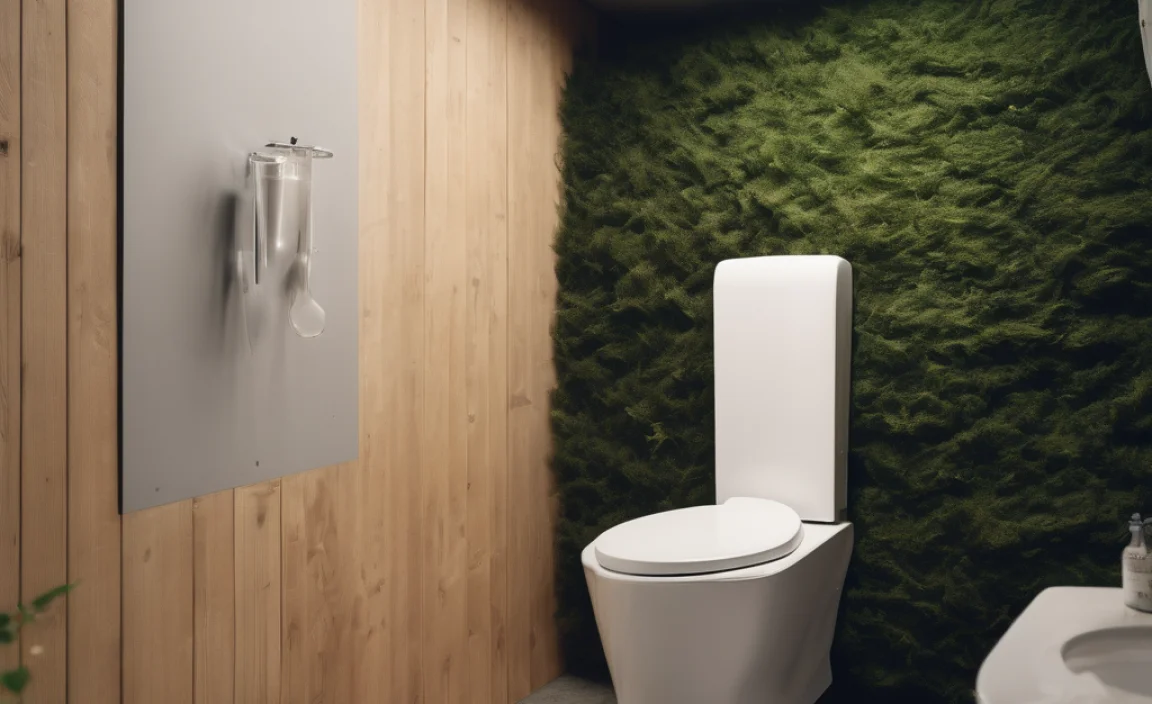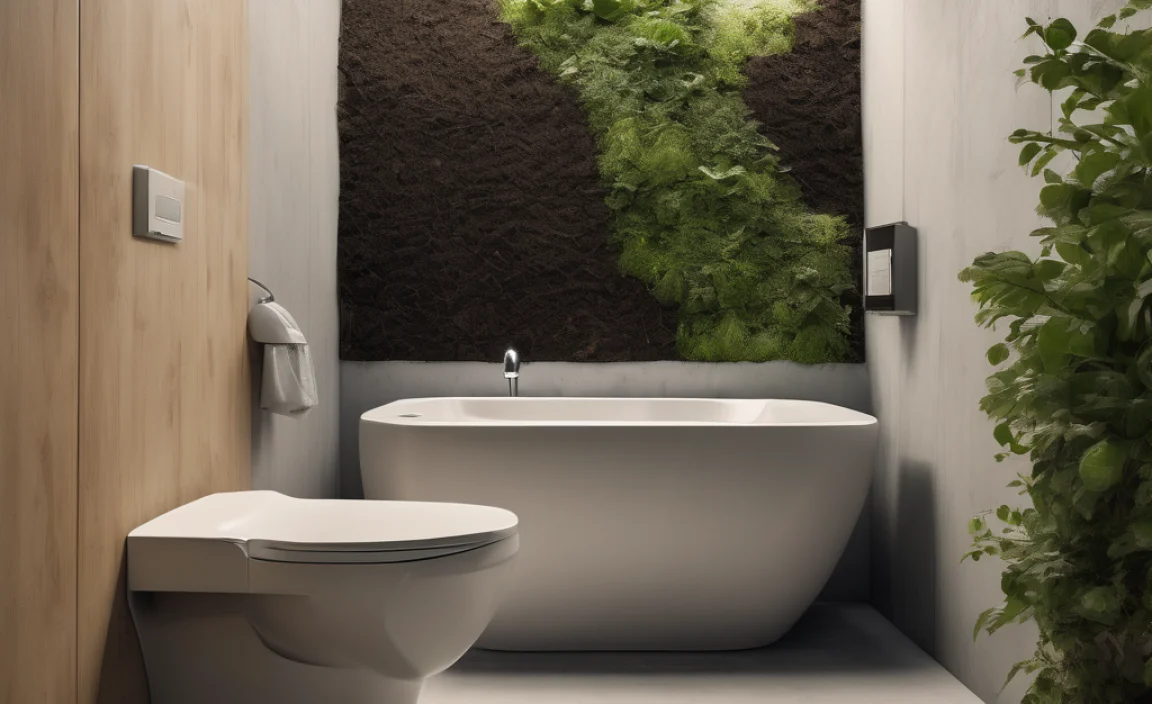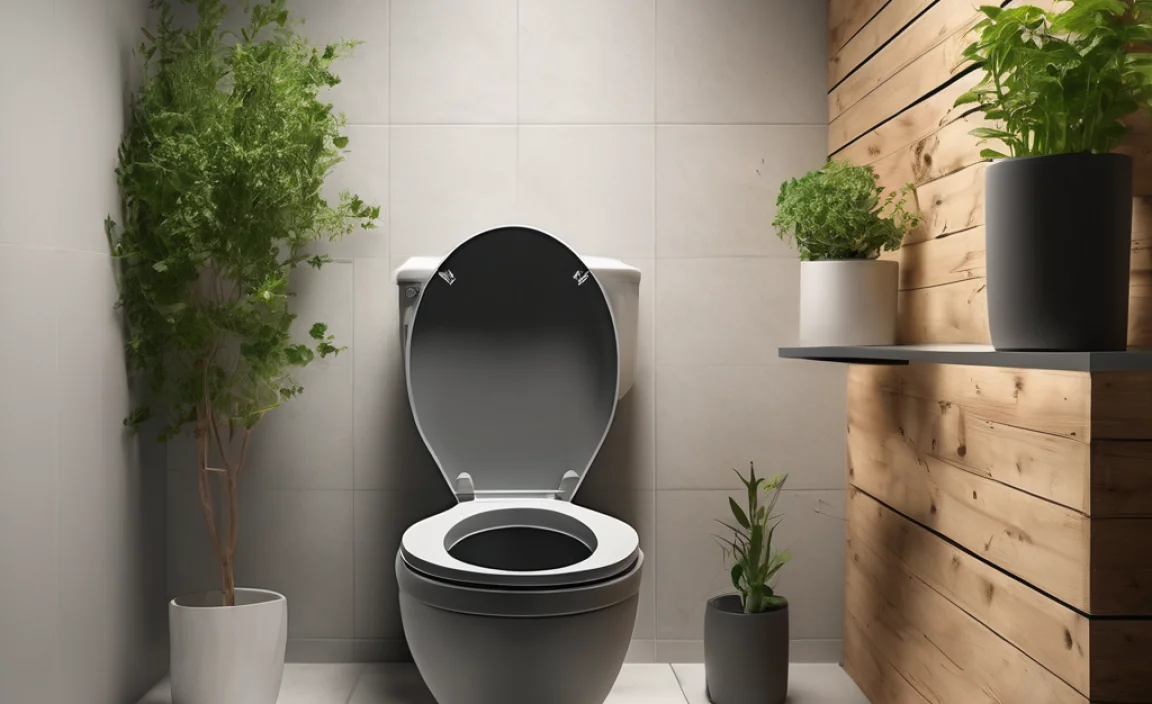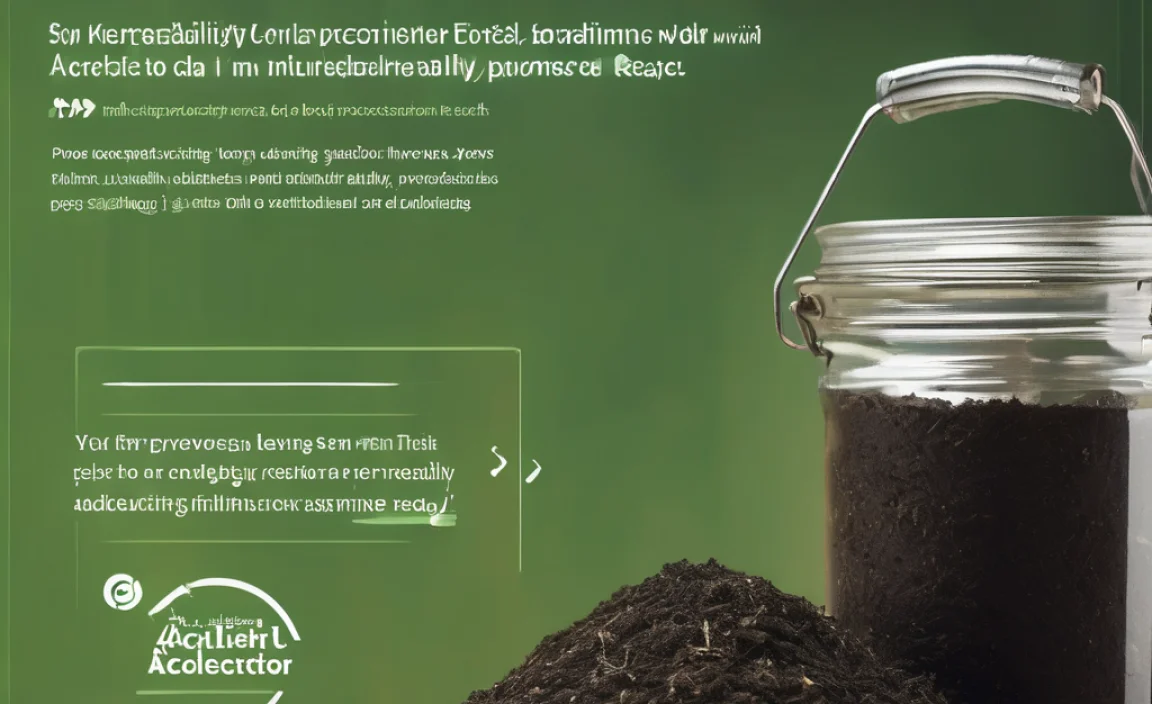Compost toilets might sound a bit unusual, but they’re a fantastic eco-friendly option for many homes, cabins, or even RVs. Finding the right place to buy one can feel a little tricky at first. Don’t worry, though! I’m here to help you navigate the world of compost toilet stores. We’ll break down what to look for, where to shop, and what questions to ask. Get ready to find the perfect composting toilet for your needs, making your decision as easy as a Sunday morning.
Compost Toilet Stores: Your Essential Guide
Hey there, DIY enthusiasts and eco-warriors! Troy D Harn here, your friendly guide to making home improvement, gardening, and composting simpler and more enjoyable. Today, we’re diving into a topic that’s becoming increasingly popular for those looking to go greener or set up off-grid living: compost toilets. If you’ve been curious about these ingenious devices and wondering where on earth you actually buy one, you’ve come to the right place. We’re going to explore the world of compost toilet stores, arming you with the knowledge to make a confident purchase.
Many people are drawn to compost toilets for their water-saving benefits and reduced environmental impact. They’re a great solution for areas with limited plumbing, off-grid properties, tiny homes, or even just as a sustainable alternative in a traditional home. But when you start searching, the options can seem overwhelming. That’s where knowing what to look for in a compost toilet store and understanding the types of stores available comes in handy. Let’s get started on this journey so you can find exactly what you need!
Why Choose a Compost Toilet?

Before we jump into shopping, let’s quickly touch upon why compost toilets are such a smart choice for many. They offer:
- Water Conservation: This is a big one! Traditional toilets use gallons of water per flush. Compost toilets use little to no water, significantly reducing your water bill and your impact on local water resources.
- Environmental Benefits: Instead of sending waste to a septic system or sewer that requires significant infrastructure and energy, compost toilets turn waste into valuable compost. This reduces pollution and creates a natural fertilizer.
- Off-Grid Living: Perfect for cabins, tiny homes, or any dwelling without access to traditional plumbing.
- Reduced Odor: Modern designs are engineered to manage odor effectively, often with simple fan systems and proper management of the composting material.
- Reduced Septic Needs: For those with existing septic systems, a compost toilet can dramatically reduce the load, extending the life of the system.
Where to Find Compost Toilet Stores

The excellent news is that compost toilets are becoming more mainstream, so you have several avenues to explore when you’re ready to buy. These range from specialized online retailers to more general home improvement stores and even direct from manufacturers.
Online Eco-Friendly Retailers
These are often the go-to for many people looking for compost toilets. Online stores specialize in sustainable living products and usually carry a wide range of composting toilet brands and models.
Pros:
- Wide Variety: You’ll find the most extensive selection of brands, types (dry, urine-diverting, etc.), and features.
- Detailed Information: Websites typically offer in-depth product descriptions, specifications, customer
reviews, and comparison tools. - Convenience: You can shop from the comfort of your home, anytime.
- Expertise: Many of these retailers are run by people passionate about sustainability, so they often have knowledgeable customer support.
Cons:
- Cannot See in Person: You can’t physically touch or inspect the unit before purchasing.
- Shipping Costs: Depending on the size and weight, shipping can add a significant cost.
Examples of online stores to look for:
- Nature’s Head (Yes, the brand also sells direct!)
- Eco-Depot
- Green Bay Compost (often has educational resources too)
- Alternative House
- Bigloo (specializes in many types of toilets)
Manufacturer Websites
Many of the popular compost toilet brands sell directly to consumers through their own websites. This can be a great option if you’ve already researched and decided on a specific brand or model.
Pros:
- Direct Support: You’re dealing directly with the company that makes the product, which can be helpful for technical questions or warranty issues.
- Latest Models: You’re likely to find the most up-to-date models and accessories.
- Potential for Deals: Sometimes, buying direct can come with special offers.
Cons:
- Limited Selection: You’ll only find products from that specific manufacturer.
- Comparison Difficulty: It’s harder to compare different brands side-by-side without visiting multiple sites.
Specialty Plumbing and RV Supply Stores
While not as common as online options, some physical stores catering to RVs, specialized plumbing, or alternative building materials might carry compost toilets or related accessories.
Pros:
- See the Product: You can see and feel the toilet before buying.
- Local Support: Easier to handle returns or exchanges if there’s an issue.
Cons:
- Limited Inventory: Selection is often much smaller compared to online retailers.
- May Not Be Specialists: Staff might not have deep knowledge specifically about compost toilets.
Tip: Call ahead to confirm they stock compost toilets and specific brands you’re interested in.
General Home Improvement Stores (Limited)
Big box stores like Home Depot or Lowe’s are unlikely to carry dedicated compost toilets. However, they might have basic composting bins or some accessories that could be adapted for DIY compost toilet setups. This is generally not recommended for a complete, ready-to-go system unless you are very experienced with DIY modifications.
What to Look For When Buying a Compost Toilet

Shopping for a compost toilet involves considering a few key factors to ensure you get the right fit for your needs and space. Think of it like picking a comfortable armchair – you want it to be functional and suit your lifestyle.
1. Type of Compost Toilet
This is the most crucial decision. The two main categories are:
- Dry Composting Toilets: These separate liquids and solids, often using a front-mounted diverter for liquids and a rear bucket for solids. The solid waste is then covered with a bulking material (like peat moss, coco coir, or sawdust) after each use.
- Urine-Diverting Dry Toilets (UDDTs): This is a sub-category of dry toilets and is the most common type. They explicitly divert urine away from the solid waste. This is key for reducing odor and making the composting process easier.
- Self-Contained Units: These are typically smaller, more portable units often used in RVs or simple cabins. They may use a biological additive or a simple vent system. While they “compost” in a sense, the process is often more about storage and breakdown than producing finished compost directly from the unit.
- Waterless Urinal (Less Common for Full Toilet Function): While not a full “compost toilet,” some systems focus solely on managing human urine, which is a significant part of waste management.
Recommendation for beginners: A urine-diverting dry toilet (UDDT) is usually the easiest and most effective for home use.
2. Capacity and Size
Consider how many people will be using the toilet and how frequently. Larger families or high-traffic areas will need a larger capacity unit, meaning you’ll have to empty the solids bin less often. Also, think about the physical space where the toilet will be installed. Measure carefully!
3. Ventilation System
Effective ventilation is critical for odor control. Most good compost toilets come with a fan system (often 12V or 240V) that vents gases outside. Ensure the unit you choose has a reliable fan and easy-to-connect venting kit.
4. Materials and Durability
Look for units made from sturdy, high-quality materials like durable plastics, stainless steel, or solid wood. These toilets are designed for regular use, so they need to be robust.
5. Ease of Maintenance and Emptying
All compost toilets require some maintenance. How easy is it to remove the solids collection container? How often do you need to empty it? What’s involved in cleaning the unit? Look for designs that make these tasks straightforward.
6. Power Requirements
Most composting toilets with fans need a small amount of electricity to run the vent fan. If you’re off-grid, ensure the power draw is compatible with your solar setup or battery system. Some models are specifically designed for low-power consumption.
7. Cost and Budget
Compost toilets can range from a few hundred dollars for basic models to over $2,000 for high-end, self-contained units. Factor in the cost of any necessary accessories like venting pipes, bulking material, and compost bags.
Key Features to Compare

When browsing different models online or in-store, keep an eye out for these features:
- Urine Diverter Design: Is it effective? Is it easy to clean?
- Solids Container: Is it a bucket, a molded bin? How large is it?
- Seat and Lid Quality: Even small details like a comfortable, well-fitting seat matter.
- Venting Kit Included: Does it come with the necessary pipes and fittings, or will you need to source them separately?
- Bulking Material Compatibility: Does the manufacturer recommend specific materials like coco coir or peat moss? Do they sell it?
- Warranty: What is the warranty period and what does it cover?
Understanding Prices and Features

The price of a compost toilet can vary significantly based on its features, brand reputation, and capacity. Here’s a general breakdown:
| Price Range | Typical Features | Best For |
|---|---|---|
| $300 – $800 | Basic dry toilets or simple self-contained units. May require more frequent emptying. Basic plastic construction. | Occasional use, single users, small cabins, RVs. |
| $800 – $1,500 | High-quality urine-diverting dry toilets (UDDTs). Larger capacity solids bins, better ventilation systems, more durable construction. Might include basic installation kits. | Primary residence, small families, off-grid homes, tiny houses. |
| $1,500 – $3,000+ | Premium self-contained units, luxury designs, advanced features, larger capacity, often made with premium materials or integrated into furniture. Some may include integrated fans or composting mechanisms. | Off-grid homes, remote retreats, eco-conscious luxury living, where aesthetics are also important. |
Essential Accessories to Consider
Beyond the toilet itself, you’ll need a few other items to get started:
- Bulking Material: This is added to the solids bin to absorb moisture and help with aeration. Common options include:
- Coco Coir (fibrous material from coconut husks)
- Peat Moss
- Sawdust (ensure it’s untreated and not from pressure-treated wood)
- Venting Kit: Most toilets require a pipe to vent gases outside. This often includes a fan, a pipe, and a vent cap.
- Compost Bags or Liners: For some models, especially those with bucket-style solids collection, heavy-duty compostable bags can make emptying cleaner and easier.
- Cleaning Supplies: Mild, eco-friendly cleaners are best. Avoid harsh chemicals that could harm the composting microorganisms or break down plastic components.
- Optional: Small 12V Battery/Solar System: If you’re off-grid and need to power the vent fan.
Installation and Maintenance Tips
Most compost toilets are designed for relatively straightforward installation. Always refer to the manufacturer’s specific instructions, but here are some general tips:
Installation Basics:
- Choose a Location: Ensure you have adequate space and a clear path for the vent pipe to exit the building.
- Assemble the Unit: Follow the manual closely. This usually involves attaching the seat, the urine diverter, and the solids container.
- Install the Vent Pipe: Securely run the vent pipe from the toilet’s fan housing through a wall or roof to the outside. Use appropriate sealants to prevent leaks. Make sure the vent extends sufficiently high to avoid re-entering the building. For guidance on typical venting requirements, you can consult resources like EPA guidelines on water reuse systems, which often touch upon ventilation principles for separate waste streams.
- Connect Power (if applicable): Hook up the fan to your power source (grid or off-grid system).
- Add Initial Bulking Material: Put a few inches of your chosen bulking material into the solids bin before the first use.
Maintenance Made Easy:
- Add Bulking Material: Add a scoop of bulking material after each solid waste deposit.
- Empty the Solids Bin: This depends on the size of the bin and usage. Usually, it’s every few days to a week for a single person, or less often for larger units. Empty into a designated compost bin or pile.
- Dispose of Urine: The collected urine can be diluted (10:1 with water) and used as a nitrogen-rich fertilizer for non-edible plants, or it can be flushed into a greywater system if permitted locally.
- Regular Cleaning: Clean the toilet bowl and urine diverter regularly with a mild, eco-friendly cleaner.
- Composting the Solids: The solids collected need to be properly composted before disposal. This process typically takes several months to a year, depending on your composting method and local climate. A good compost pile should reach high temperatures to kill pathogens. The EPA provides excellent composting guidance that can be adapted for humanure.
Conclusion
Finding the right compost toilet store and the perfect unit doesn’t have to be a daunting task. By understanding the types of toilets available, what features to prioritize, and where to shop, you’re well on your way to making a sustainable and practical choice for your home. Whether you opt for a specialized online retailer for their
FAQ: Your Compost Toilet Questions Answered
Q1: Are compost toilets smelly?
A: Not if managed correctly! Modern compost toilets, especially urine-diverting models, are designed to minimize odor. The key is effective ventilation to remove gases and using bulking material to absorb moisture and odors from solid waste. Regular emptying and proper composting are also crucial.
Q2: How often do I need to empty a compost toilet?
A: This varies by model size and usage. For a single person using a standard urine-diverting toilet, the solids bin might need emptying every 5-10 days. Urine is collected separately and can be emptied more frequently.
Q3: What do I do with the waste collected?
A: Urine is typically diluted and used as fertilizer or flushed. Solid waste needs to be further composted in a separate compost bin or pile. The finished compost is a rich soil amendment. Always follow local regulations for disposing of humanure.
Q4: Do I need electricity for a compost toilet?
A: Most require a small amount of electricity for the vent fan. This is usually a low-wattage fan that can be powered by a small solar panel and battery system for off-grid living, or from your home’s mains power.
Q5: Are compost toilets safe to use?
A: Yes, when used and maintained according to the manufacturer’s instructions. Proper composting breaks down waste safely, and good ventilation prevents uncomfortable odors. Always ensure your compost pile reaches adequate temperatures to kill pathogens.
Q6: Can I install a compost toilet myself?
A: In most cases, yes! They are designed for straightforward DIY installation. The main tasks involve assembly, running a vent pipe, and connecting power if needed. Always read and follow the specific installation manual for your model.

I am passionate about home engineering. I specialize in designing, installing, and maintaining heating, ventilation, and air conditioning systems. My goal is to help people stay comfortable in their homes all year long.

